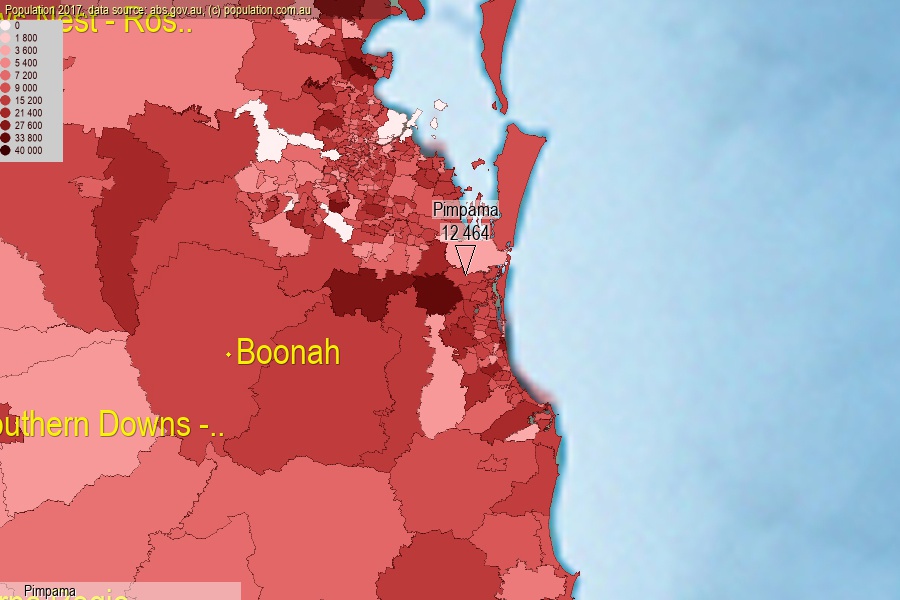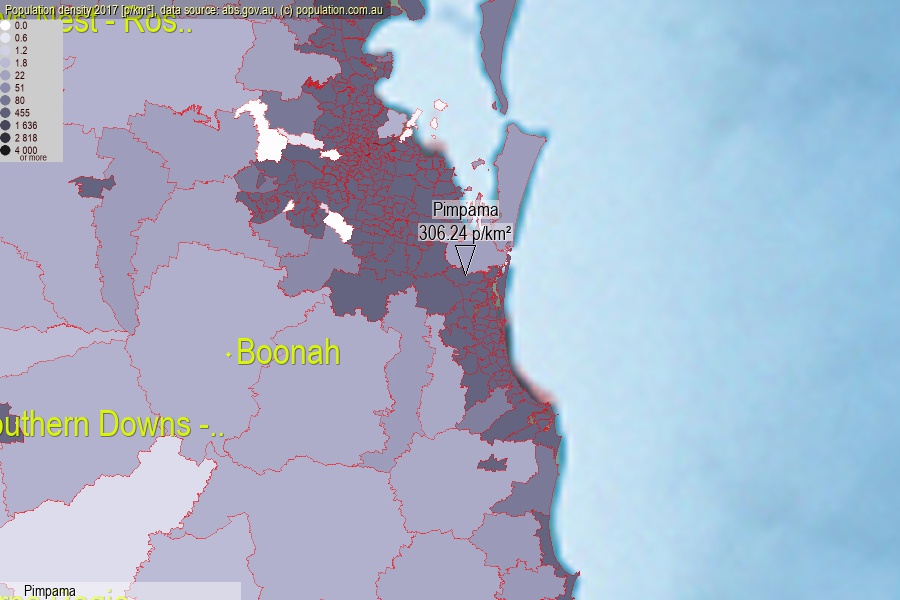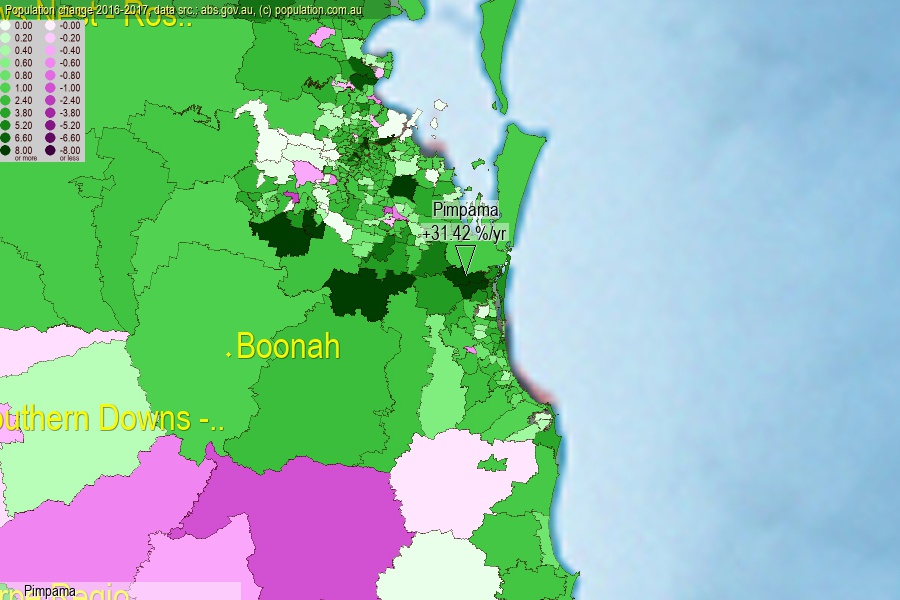 population.com.au
population.com.auLast official estimated population of Pimpama (as Statistical Area Level 2) was 12 464 people (on 2017-06-30)[2]. This was 0.05% of total Australian population and 0.25% of QLD population. Area of Pimpama is 40.70 km², in this year population density was 306.24 p/km² . If population growth rate would be same as in period 2016-2017 (+31.42%/yr), Pimpama population in 2025 would be 110 914. [0]



Click to enlarge. Pimpama is located in the center of the images.
Population [people], population density [p./km²] and population change [%/year] [2]
View borders » (new window) [4]
[1991-1992] -1.66 %/Yr.
[1992-1993] -1.96 %/Yr.
[1993-1994] -2.13 %/Yr.
[1994-1995] -2.46 %/Yr.
[1995-1996] -0.58 %/Yr.
[1996-1997] -1.74 %/Yr.
[1997-1998] +1.84 %/Yr.
[1998-1999] +3.48 %/Yr.
[1999-2000] +2.24 %/Yr.
[2000-2001] +1.64 %/Yr.
[2001-2002] +2.90 %/Yr.
[2002-2003] +2.62 %/Yr.
[2003-2004] +2.68 %/Yr.
[2004-2005] +1.93 %/Yr.
[2005-2006] +5.30 %/Yr.
[2006-2007] +12.79 %/Yr.
[2007-2008] +16.06 %/Yr.
[2008-2009] +11.63 %/Yr.
[2009-2010] +11.76 %/Yr.
[2010-2011] +17.54 %/Yr.
[2011-2012] +20.56 %/Yr.
[2012-2013] +21.33 %/Yr.
[2013-2014] +20.14 %/Yr.
[2014-2015] +21.74 %/Yr.
[2015-2016] +33.65 %/Yr.
[2016-2017] +31.42 %/Yr.
[0] Calculated with linear interpolation from officially estimated population
[1] Read more about SA2 and Australian Statistical Geography Standard (ASGS) on abs.gov.au
[2] Population data from Australian Bureau of Statistics (Population and density: 2017; change: 2016-2017)
[3] Digital Boundaries: Australian Statistical Geography Standard (ASGS) 2016.
[4] Border coordinates are simplifyed using Ramer-Douglas-Peucker algorithm.